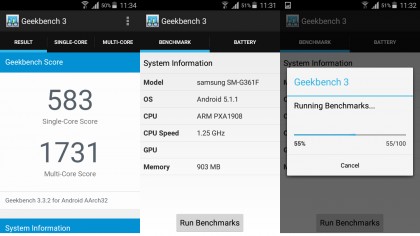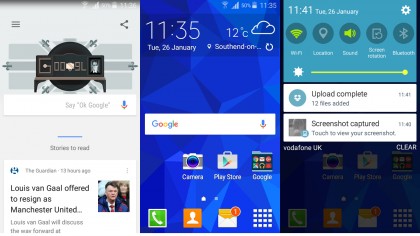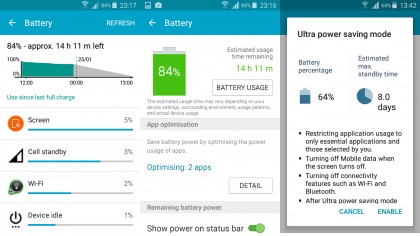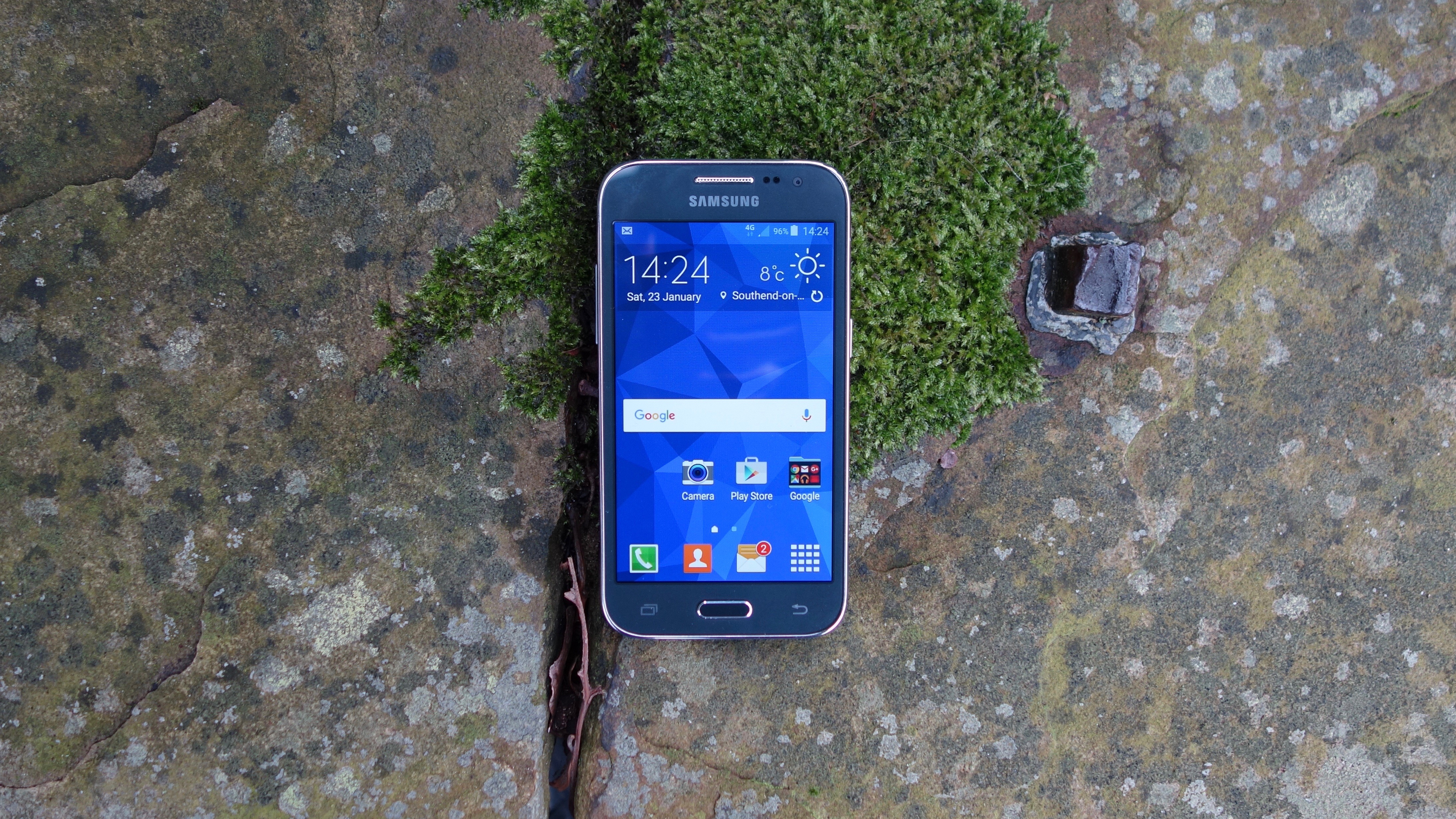Why you can trust TechRadar
Performance
Samsung has gone with a pretty common low-end processor for the Galaxy Core Prime in the Snapdragon 410.
Qualcomm's entry-level 1.2GHz quad-core CPU is so common because it does the basics competently, and that's pretty much how it proves to be here.
Backed by 1GB of RAM, the Samsung Galaxy Core Prime handles general navigation fairly smoothly. You'll get the odd delay when opening up apps, but the general experience is quite fluid.

You shouldn't bank on strong gaming performance, except for simple 2D games. Dead Trigger 2 runs less than smoothly on medium settings (it won't go any higher), Angry Birds 2 is playable with the odd physics-induced frame rate dip, while Beneath the Lighthouse and Horizon Chase didn't load at all for me.
I'll discuss camera performance in more detail later, but for now I'll say it's less than snappy – both in terms of starting up the camera app and actually taking pictures.
Of course, none of these drawbacks are unusual for phones pitched at this level. In fact, the Galaxy Core Prime's less-than-sharp display could give it a bit of a performance boost against similarly specced rivals – on paper, at least.

During my time with the phone, it snagged an average Geekbench 3 benchmark test score of 1,710. This puts it ahead of the Motorola Moto E, which could only manage 1421, and the EE Harrier Mini at 1499. Both have sharper displays than the Core Prime.
Of course, both the Moto E and the Harrier Mini balance this out with leaner, faster, and altogether more appealing UIs. This being a Samsung phone, the Galaxy Core Prime gives you the company's stubborn repurposing of Android 5.1.1 out of the box.
This is a similar TouchWiz skin to the one found on the rest of Samsung's recent releases dating back to the Samsung Galaxy S6, which means it's actually a big improvement on how things used to be.

Samsung has scaled right back on the needless duplicated apps, pointless animations, and gaudy UI elements. But it's still an unnecessary obfuscation of the excellent stock Android OS.
The drop-down notification tray is a restyled effort, though it fulfils a similar role, with various settings toggles and a brightness slider alongside swipable notifications. More of those toggles can be accessed by scrolling right, but I found this to be a less elegant solution than the two-swipe expansion system found in stock Android.
Google Now won't be found with a swipe to the right, nor with a hold-and-swipe of a virtual home key (there is none), but rather a press-and-hold of the physical home button. I actually like this tactile approach quite a lot, and it mimics the tight implementation of Siri on the iPhone range.
While the Samsung Galaxy Core Prime has access to faster 4G networks, it's worth highlighting that its Wi-Fi performance isn't up to the standard of most mid and top-range phones. As with the Moto E, you can't access the faster, less-congested 5GHz band. It's something to keep in mind if your home network's 2.4GHz band is frequently jammed up.
Battery life
The Samsung Galaxy Core Prime uses a compact 2000mAh battery. That might sound small, but remember that the phone's display is less taxing than most.
As a result, I found the phone's stamina to be perfectly decent. Very good, in fact. Following the standard techradar stamina test – a 90-minute 720p video with the screen brightness cranked right up to max – I recorded an average of 79% left in the tank. That's about the same as the Moto E, which features a much larger 2390mAh battery to account for its sharper screen.

I found that the Core Prime's battery performed even better in general usage. After a full 24 hours of very light use (with airplane mode activated overnight), the Galaxy Core Prime was left with 84% of its charge. Increase that usage and you'll still be good for the best part of two days.
Samsung also offers a decent selection of battery-saving tools, such as an optimisation function that will scan for seldom-used apps and scale back the frequency of their background operations.
There's also an Ultra Power Saving mode that strips your phone's UI and operation back to near feature phone level, resulting in potentially weeks of standby time.
